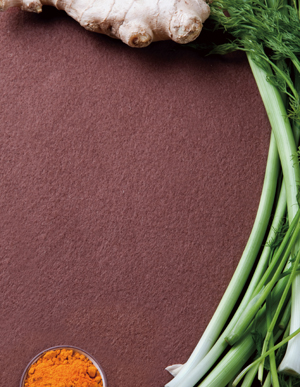 I am not a squeamish cook, nor am I timid. I scrape marrow and I render fat, but we all have our kryptonite. Mine is cooking fish. Its offensive characteristics include: the fishy smell it leaves in my kitchen, its finicky disposition to being over cooked, the diligence needed to check for impeccable freshness. And don’t even get me started on browning butter on a weeknight. Eating and cooking fish while living in a coastal city is another story all on its own; anyone would find it easy to wax lyrical about Peruvian ceviche in Peru, where it’s actually a hassle to find unfresh fish. In a landlocked place like Beijing, fresh fish is an ordeal.
I am not a squeamish cook, nor am I timid. I scrape marrow and I render fat, but we all have our kryptonite. Mine is cooking fish. Its offensive characteristics include: the fishy smell it leaves in my kitchen, its finicky disposition to being over cooked, the diligence needed to check for impeccable freshness. And don’t even get me started on browning butter on a weeknight. Eating and cooking fish while living in a coastal city is another story all on its own; anyone would find it easy to wax lyrical about Peruvian ceviche in Peru, where it’s actually a hassle to find unfresh fish. In a landlocked place like Beijing, fresh fish is an ordeal.
Sure, I cook the occasional pan-roasted salmon, but salmon is cheating. I think it’s something coquettish in its orange hue that hoodwinks my usual distaste for fish. Plus, it’s fatty. Nothing bad tasting can ever come of something fatty. It’s whitefish that I take issue with. It’s bland, like chicken breast with none of its meaty savoriness. I rarely order it in restaurants (being a "meat and meat" girl myself) and I cook it even more rarely. Sure, I read the legions of health reports about omega-3s, along with everyone else, but mostly I just stick that to the back of my mind, a few shelves behind needing to dry clean my coats more often.
Simple, tasty (non-salmon) fish? Myths! I thought. Then I went to Vietnam, a country that has more coastline than country. There, I found a fish dish, not drenched in butter (brown or otherwise) and bright with flavor.
The dish, called cha cá, is usually cooked at the table, think dry, hotpot. Meaty chunks of white fish are dusted in tumeric and ginger powder, fried so it’s ever so slightly crunchy on the outside and stir fried at the table with scallions and dill. The scallions caramelize; nutty and sweet and addictive. The fish and greens are eaten with rice noodles, cucumber, lettuce, fish sauce and peanuts. There are restaurants that serve nothing but this, and when you have it in the flesh, down a little alley in Hanoi, you have no idea why they would do otherwise.
A totally authentic version requires marination. Since this is my simplified version, with no claims to authenticity, it’s totally up to you. If you have a few minutes to rub the fish down and let it sit while you wash the veggies, then do it. If not, the world will go on turning. I don’t often have rice noodles on hand, so I paired this fish with a salad made from the traditional cucumber and lettuce accompaniment. I’ve made this with frozen white fish fillets, and it’s saved me the agony of fresh fish inspection. I’ve added scallions because they’re now in season and are wonderfully sweet when caramelized.

Fish with Grilled Scallions
(serves 3-4)
1.5 kg white fish, cut into chunks or small fillets
1 tsp turmeric
¼ inch chunk of ginger, finely grated
500g scallions
zest and juice of 1 lemon
1 tbsp fish sauce (optional)
250g dill
1 small head lettuce
1 cucumber, sliced
1 small clove of garlic, crushed and minced
olive oil
flour
salt and pepper to taste
Dust the fish with salt, pepper, turmeric and ginger. Mix and let marinate for 5-10 minutes. In the meantime clean the scallions very well, cutting off the roots and about two inches of green leaves from the top. Combine lemon zest, juice, garlic, fish sauce, olive oil, salt, pepper in a bowl, set the dressing aside. Heat a flat frying pan until very hot. Meanwhile, dust fish with flour until very lightly coated, shaking off any excess flour. Add enough oil to coat the pan. Fry fish until golden on all sides, being careful not to crowd the pan. Remove fish and set aside. Wipe the pan clean. Return to high heat. Add the scallions, drizzle with a little more olive oil, salt and pepper. Grill and turn until the scallions wilt and begin to brown in spots. Add the dill and return the fish back to the pan. Cover and turn the heat down to low. Toss lettuce and cucumber with the dressing prepared earlier. Check to see if the fish is opaque throughout and the dill is wilted. Serve fish with dill and scallions on top, salad on the side, and a very cold, dry white wine.



